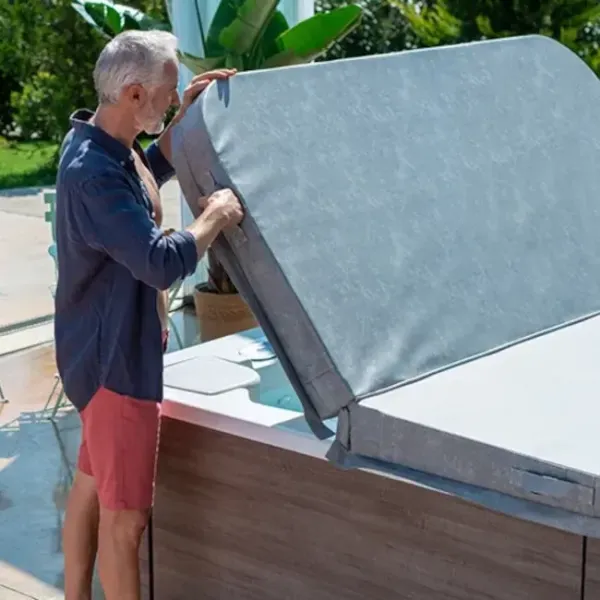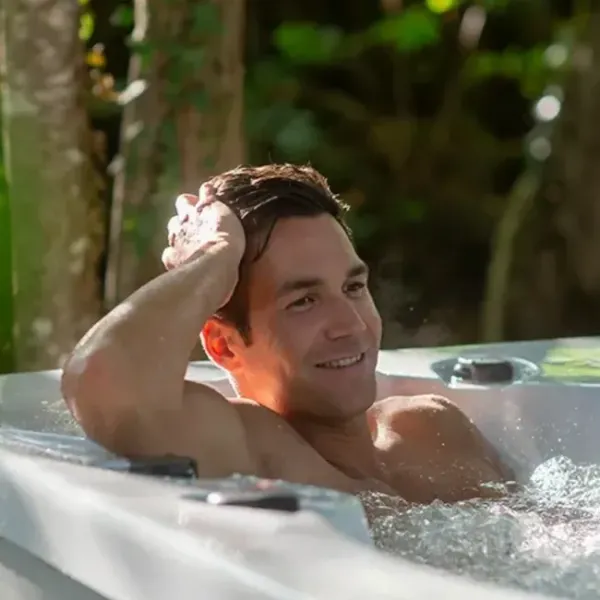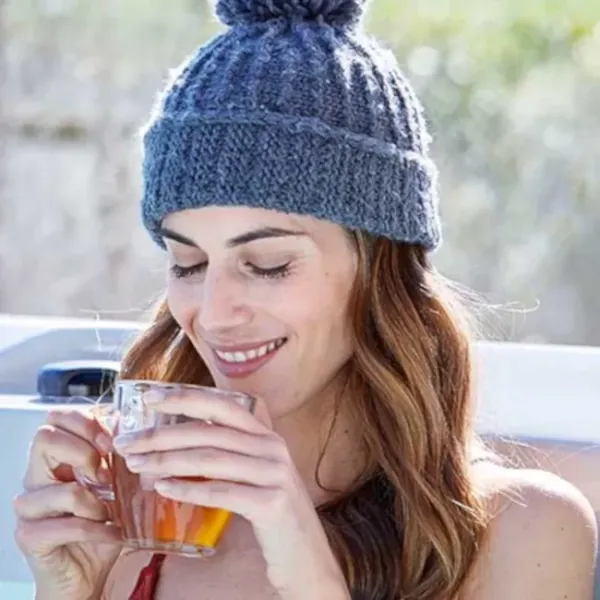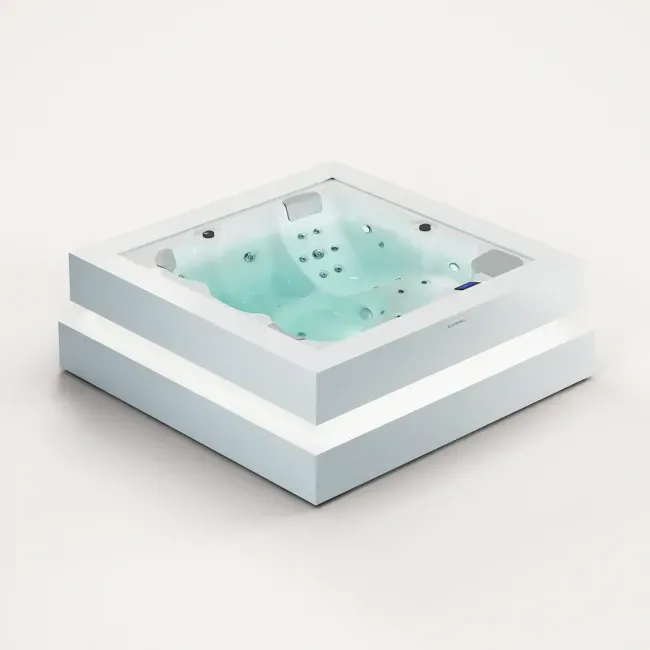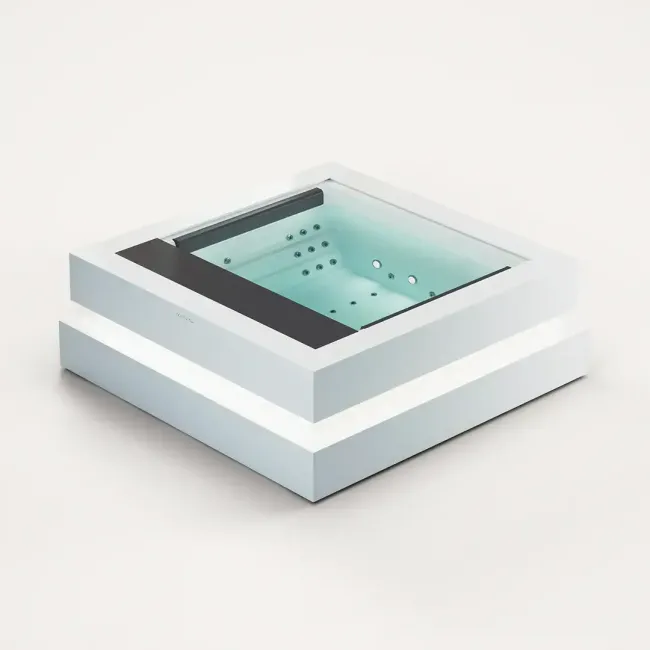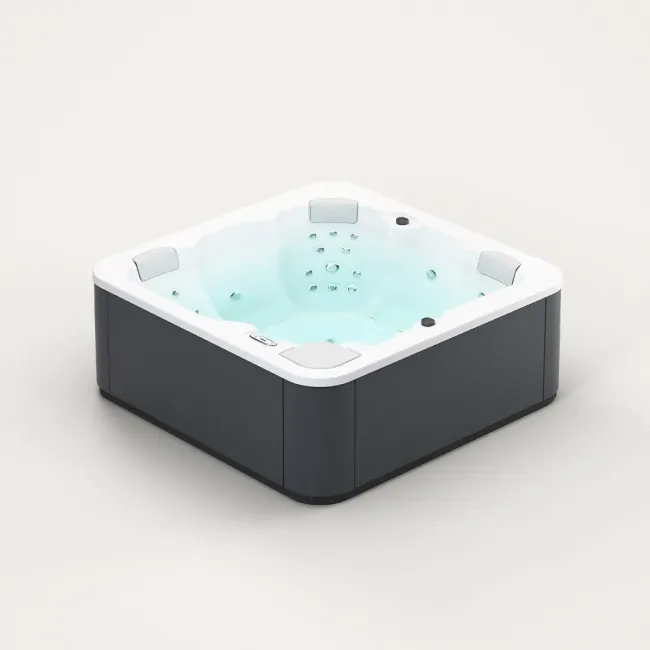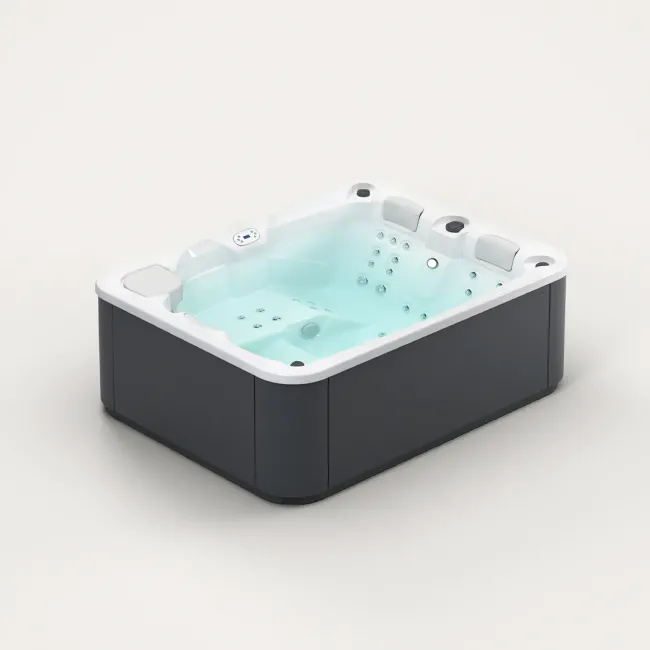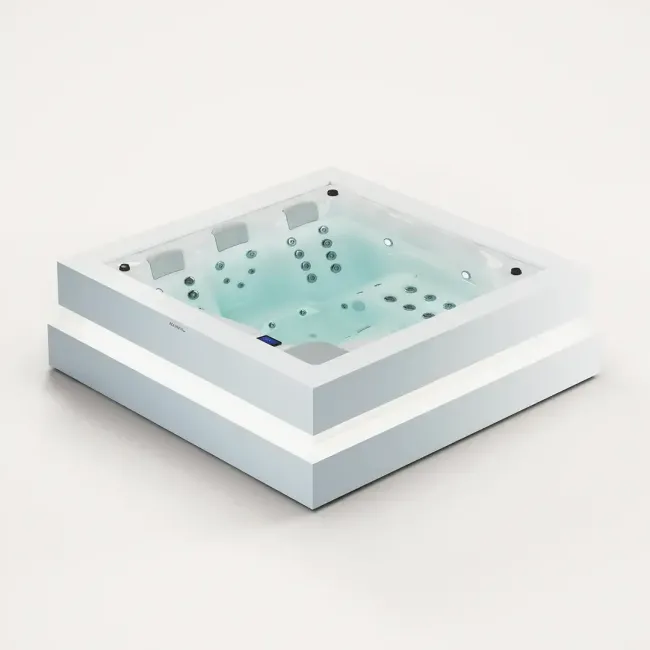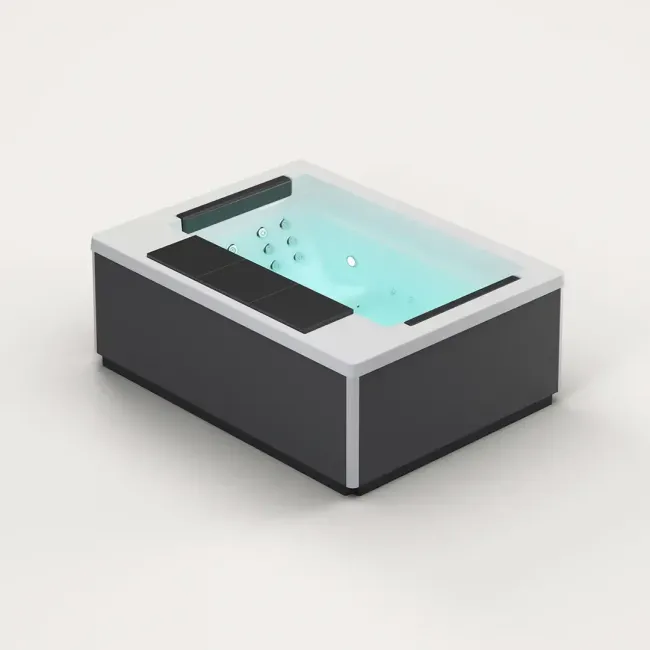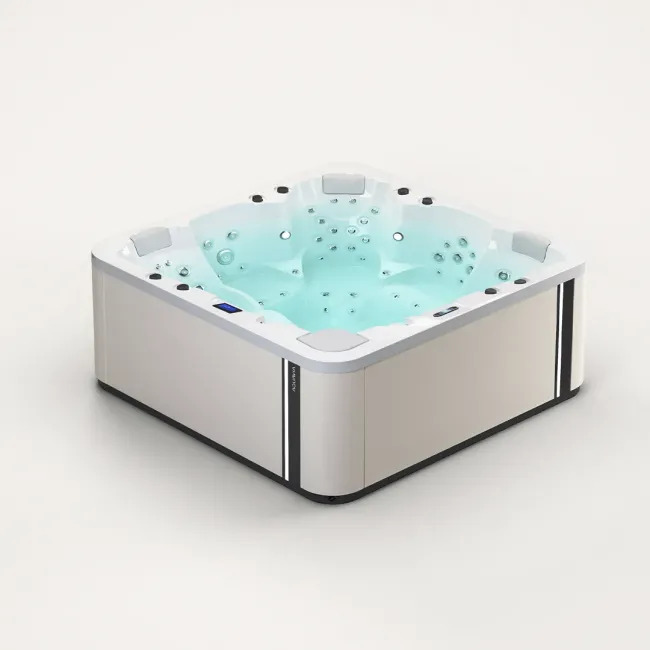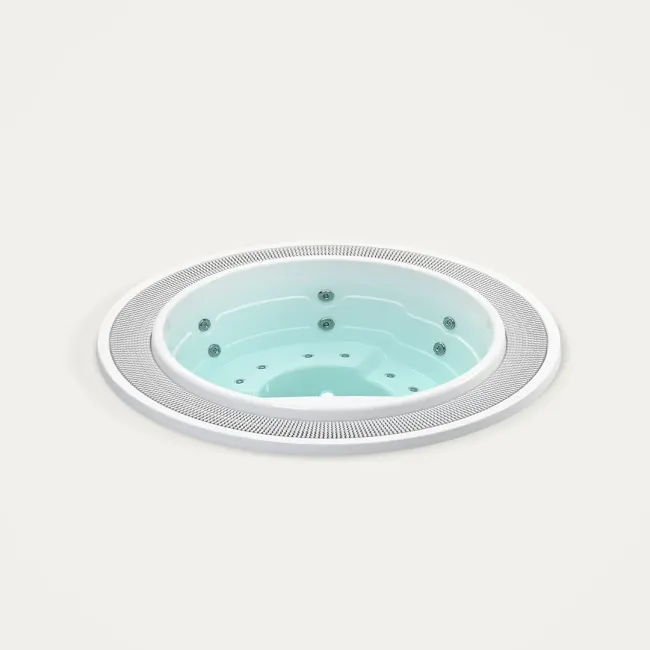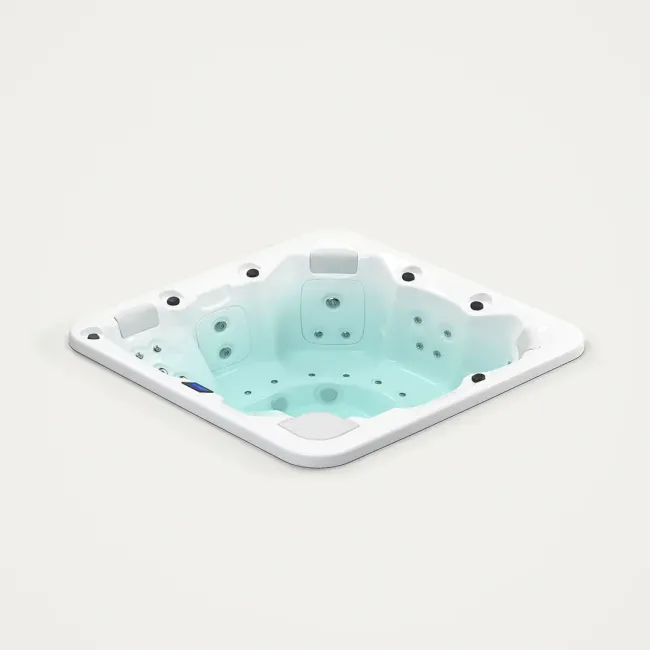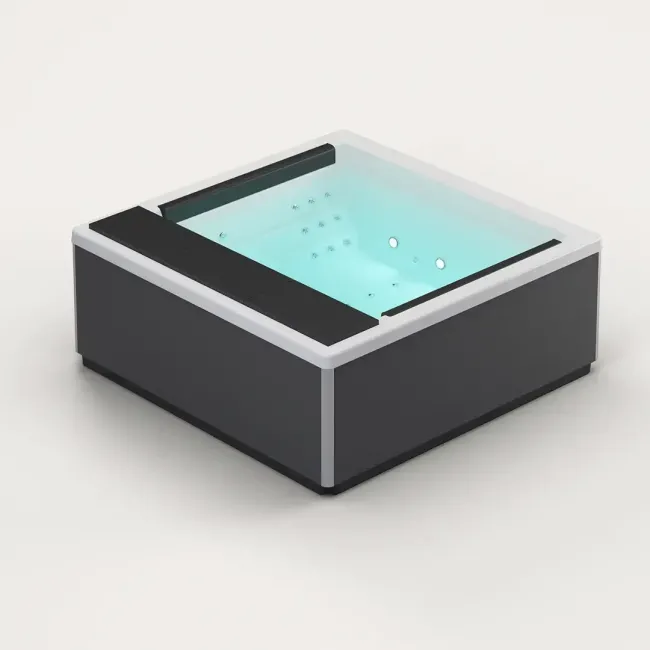How much does a hot tub really consume? Energy-saving tips
If you're thinking about installing a hot tub at home , you're probably wondering how much it actually consumes and how you can optimize it. In this article, we explain everything you need to know about hot tub consumption, the factors that influence it, and the best tips for saving energy without sacrificing maximum comfort.
Step 1. Understand the power consumption of a jacuzzi or hot tub
The power consumption of a hot tub depends on several technical and usage factors. In the case of Aquavia Spa , most of our models are factory-set to not exceed 3.5 kW maximum power. This ensures that the hot tub 's power consumption is reasonable and controlled, even with frequent use.
However, some models in the Premium range or swimspas , due to their larger size and features, can reach up to 6 kW. Even so, this consumption level remains competitive compared to other water heating systems.
It's worth noting that a hot tub's energy consumption isn't constant: it varies depending on the initial water temperature, the length of use, and the outside climate. For example, maintaining the water temperature in winter requires more energy than doing so in summer.
Therefore, it is essential to understand how the conditions of use influence the electricity consumption of a jacuzzi in order to implement saving measures.
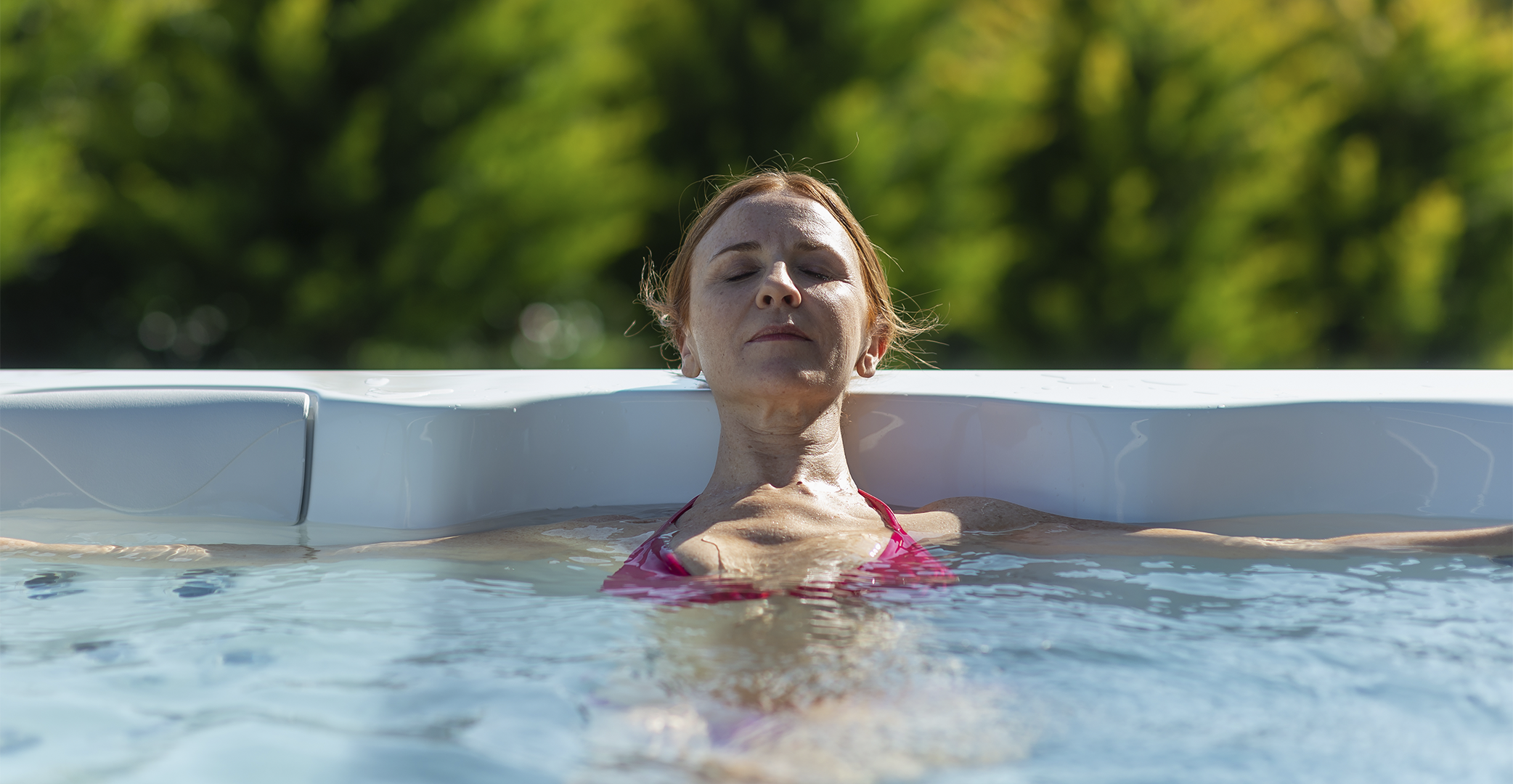
Step 2. Identify the factors that influence a hot tub 's consumption
Jacuzzi consumption is not a fixed value, but rather the result of several factors that directly affect the energy required for the equipment to operate:
• Power of the chosen model: compact hot tubs have lower energy demands than large swimspas .
• Frequency and duration of use: The longer and more often the hot tub is used, the higher the electricity bill.
• Outdoor temperature: outdoor jacuzzi consumption may increase in winter due to heat loss to the environment.
• hot tub insulation: A good thermal insulation system can drastically reduce heat loss and, consequently, the electrical consumption of a hot tub.
• Accessories and support systems: a high-efficiency heat pump , a thermal cover , or smart programming are key elements to keeping costs under control.
By understanding these factors, you'll be able to identify where to optimize your installation and usage routine to keep your hot tub's energy consumption as low as possible.
Step 3. Install an efficient heat pump
A heat pump is the most effective way to reduce the electricity consumption of a Jacuzzi . Its reversible cycle technology is up to five times more efficient than an electric heater.
Main advantages:
• Maintains constant temperature all year round.
• Significantly reduces the consumption of a jacuzzi .
• It works with low maintenance and long life.
Step 4. Always use a thermal cover
Using a thermal cover can reduce hot tub energy consumption by up to 70%. Aquavia 's Energy Saving Cover :
• Maintains water temperature.
• Protect acrylic from the sun.
• Prevents the entry of dirt.
It is an essential step if you want to keep your jacuzzi's electricity consumption low.
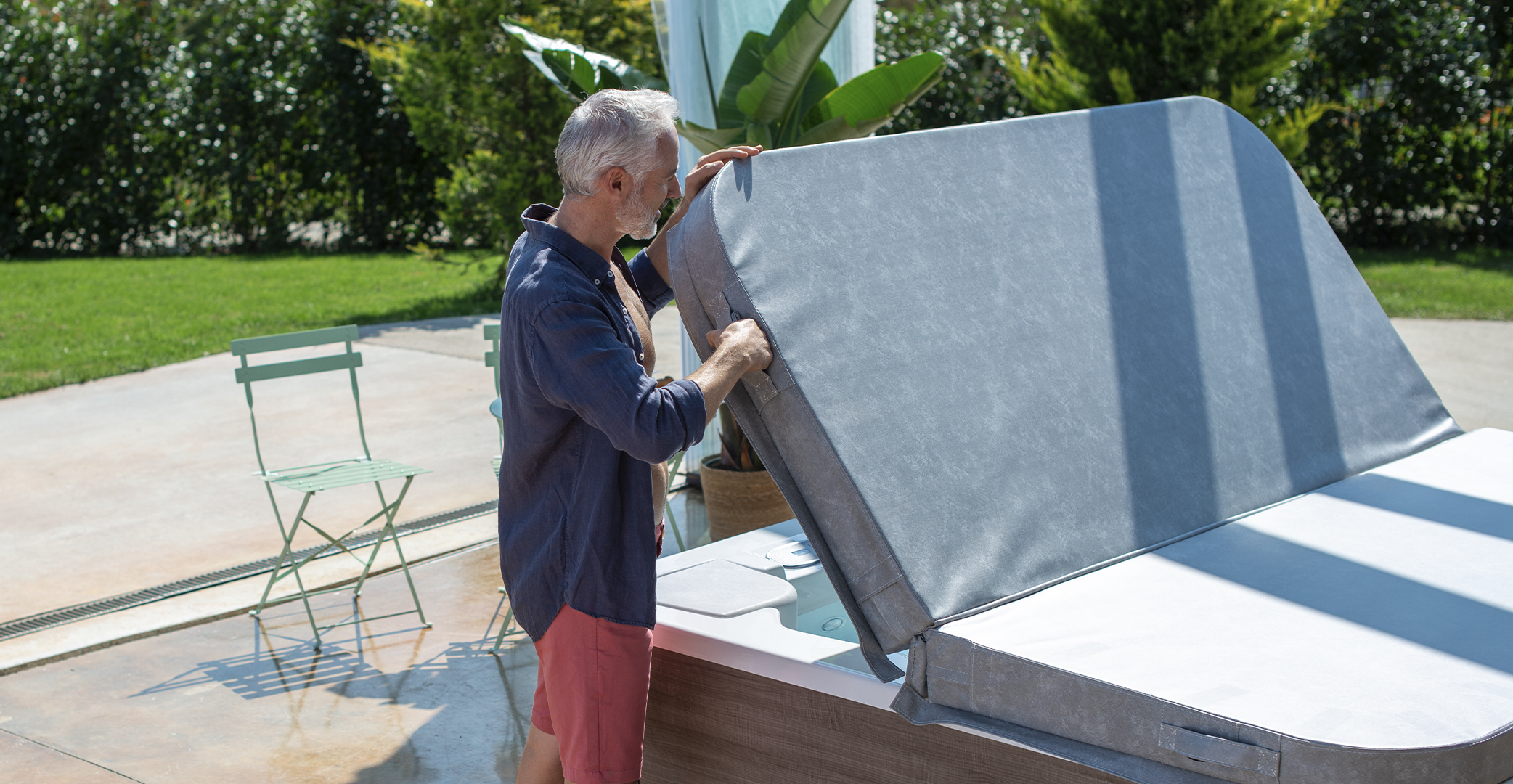
Step 5. Reinforce your hot tub 's insulation
A poorly insulated hot tub loses a significant amount of heat. To address this, Aquavia Spa offers two benchmark systems:
• EcoSpa : allows you to preserve the temperature with an energy saving of 69% even at -15°C.
• Nordic Insulation System : further improves efficiency, with 80% energy savings compared to an uninsulated hot tub under the same conditions.
Thanks to these technologies, the consumption of a jacuzzi is drastically and sustainably reduced.
Step 6. Adjust the water temperature
Although it's common to keep the water between 37–38°C (99–100°F), you can reduce the temperature a few degrees if you won't be using the hot tub for several days. This reduces heating effort and the hot tub 's consumption.
Step 7. Schedule off-peak operation
If your electricity rate includes time-of-use, take advantage of off-peak hours to heat your water or activate filtration. This small gesture has a direct impact on your electricity bill.
Step 8. Choose an energy-efficient hot tub
The choice of model is crucial to ensure that a hot tub's power consumption doesn't become a problem. These are the aspects you should consider:
• Insulation technology: Good insulation minimizes heat loss.
• Heat pump compatibility: having this system makes a difference in efficiency.
• Smart control panel: systems like the Balboa Touch allow you to program functions and optimize hot tub consumption.
At Aquavia Spa we develop each model with a clear focus on energy efficiency, designed for clients who want to enjoy hydrotherapy without the expense of a hot tub.
Step 9. Enjoy the outdoor jacuzzi in winter
Many people wonder if the cost of an outdoor jacuzzi in winter is worth the experience. The answer is yes: with a cover, insulation, and a heat pump, the cost can be reduced to very competitive levels.
The sensation of immersing yourself in a hot hot tub while temperatures are below zero outside is unparalleled. And with a Jacuzzi's optimized power consumption , you can enjoy it without worrying about the bill.
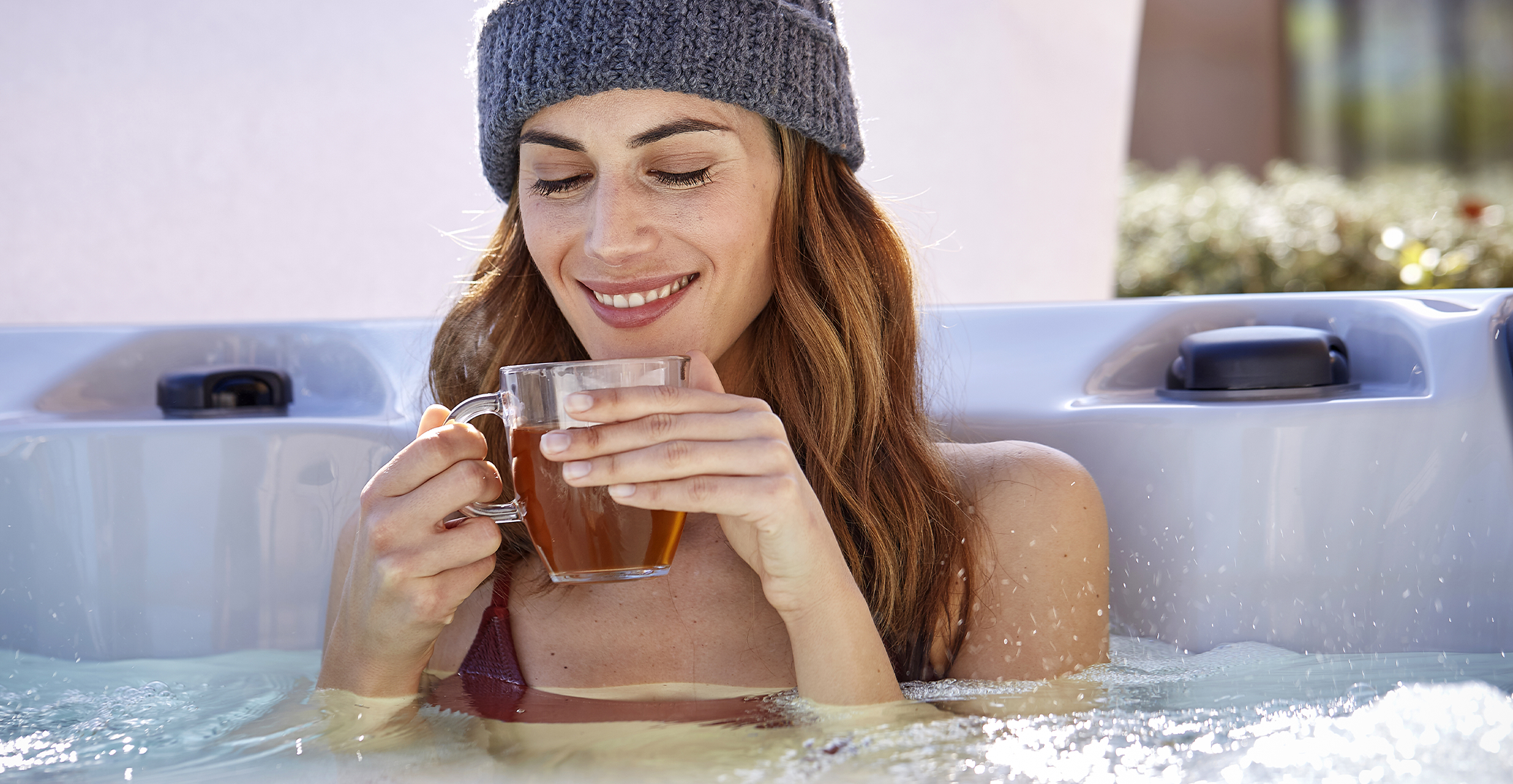
A home hot tub doesn't have to mean a huge expense. Understanding how hot tub consumption works, knowing the factors that affect it, and implementing efficiency strategies are key to optimizing your investment.
At Aquavia Spa we work to ensure that each model offers the perfect balance of comfort, durability, and low consumption . If you're considering installing a hot tub in your home, choose a solution designed for energy efficiency.
Save energy without sacrificing comfort. Discover our energy-efficient hot tubs and start enjoying yourself without worrying about the bill. See energy-efficient hot tubs .

